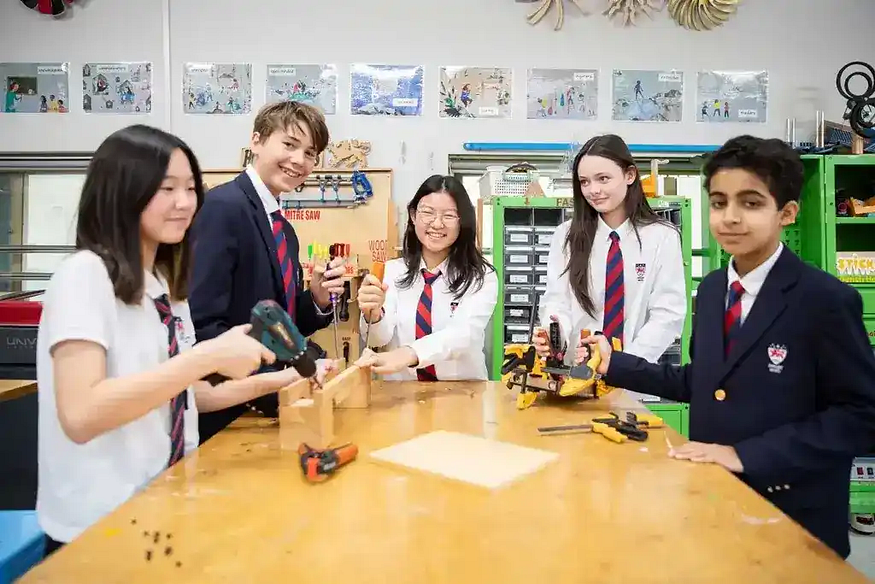How Does the IB Middle Years Programme Foster Critical and Reflective Thinking?

In an era where information is abundant and change is constant, the ability to think critically and reflectively is more vital than ever. The IB Middle Years Programme (MYP) as implemented in grades 6–10, offers a rich framework aimed at cultivating these very skills. Here’s how the MYP nurtures critical and reflective thinkers:
1. Inquiry-Based Learning as the Core Engine
One of the foundation stones of the the MYP is inquiry-based learning. Rather than delivering knowledge in isolation, the curriculum encourages students to ask meaningful questions, conduct investigations, and construct their own understanding.
- Students are prompted to dig beneath the surface, to challenge assumptions, and to explore multiple perspectives.
- This approach inherently demands reflection: after inquiry, learners must revisit their questions, evaluate their methods, and refine their understanding.
By making inquiry central, the MYP pushes students into active roles instead of passive receivers a shift that is essential for developing critical thinking.
2. Interdisciplinary Connections & Real-World Relevance
The MYP doesn’t treat subjects as silos; it uses interdisciplinary units to link different areas of knowledge through shared concepts and global contexts.
- For example, a unit may combine science and geography to tackle climate change, or integrate literature and social studies to explore social justice.
- These cross-disciplinary bridges force students to synthesize knowledge, compare lenses, and examine how ideas interconnect all of which sharpen critical thinking.
By situating learning within real-world contexts, the MYP ensures that inquiry is not abstract but grounded. Students see how their studies matter to local or global challenges, making reflection more concrete and purposeful.
3. Rigorous, Criterion-Referenced Assessment
In place of memorization or rote repetition, the MYP employs criterion-referenced assessment across diverse tasks: investigations, projects, debates, reflections, open-ended tasks, and experiments.
- Because students are assessed against clear criteria (rather than curve or rank), they must understand why they succeed or fall short.
- Reflective opportunities are built in: learners evaluate their own work against these criteria, identify strengths and weaknesses, and plan improvements.
- This cycle of planning, doing, assessing, and reflecting encourages a mindset of continuous growth and self-awareness.
4. The Personal Project as Culminating Reflection
A signature feature of the MYP is the Personal Project, undertaken in Grade 10 over eight months.
- This long-term, student-driven project requires learners to draw on their knowledge, skills, and passions, then produce a product or outcome.
- More than producing something, students must reflect on their process, challenges, decisions, and learning. They are assessed against rigorous IB criteria, reinforcing that reflection and metacognition are central, not optional.
- The Personal Project is often where students’ ability to think critically, self-manage, and reflect become manifest and concrete.
5. Service & Action with Reflective Evaluation
Another dimension of the MYP is Service & Action students engage in community activities that align with their interests and societal needs.
- Participation isn’t enough; students are expected to reflect on the impact, their leadership, and the quality of the service.
- Mentors guide these reflections, asking students to consider questions like: How did my action affect others? What did I learn about needs in my community? What could I do differently next time?
- An annual Service & Action exhibition showcases student work and reflections to the wider school community, further reinforcing that thought and action are integrated.
6. Cultivation of the Learner Profile & ATL Skills
The MYP aims to develop not just knowledge, but learners characterized by the IB Learner Profile (e.g. inquirers, thinkers, reflective, principled).
- Reflective is one of those explicit attributes students are expected to understand their strengths and weaknesses, and plan future growth.
- Additionally, the MYP emphasizes Approaches to Learning (ATL) skills including thinking, research, communication, self-management, and social skills.
- These ATL skills are tools for critical inquiry: thinking skills help with analysis and evaluation; self-management supports planning and metacognition; communication forces clarity of thought and perception.
7. Progressive Choice and Ownership
While the MYP maintains a balanced curriculum across eight subject groups, in the later years (Grades 9–10) students gain increasing choice and flexibility.
- They may choose among language acquisition options, arts and design electives, and focus areas aligned with their interests.
- This growing autonomy fosters student agency, pushing learners to take responsibility for their learning and think critically about their pathways.
- When students direct their own learning choices, they are more invested and more likely to reflect on their decisions and outcomes.
Conclusion
Through its structure, assessments, project work, inquiry focus, and emphasis on reflection, the IB Middle Years Programme (MYP) offers a fertile environment for cultivating critical and reflective thinking. Students don’t just learn content they learn how to think about their learning, question assumptions, make connections, and grow as independent, thoughtful individuals.
At Dwight Seoul, the MYP is implemented with intentionality and depth, ensuring students emerge not only academically prepared but intellectually equipped for lifelong reflection and inquiry.

Comments
Post a Comment